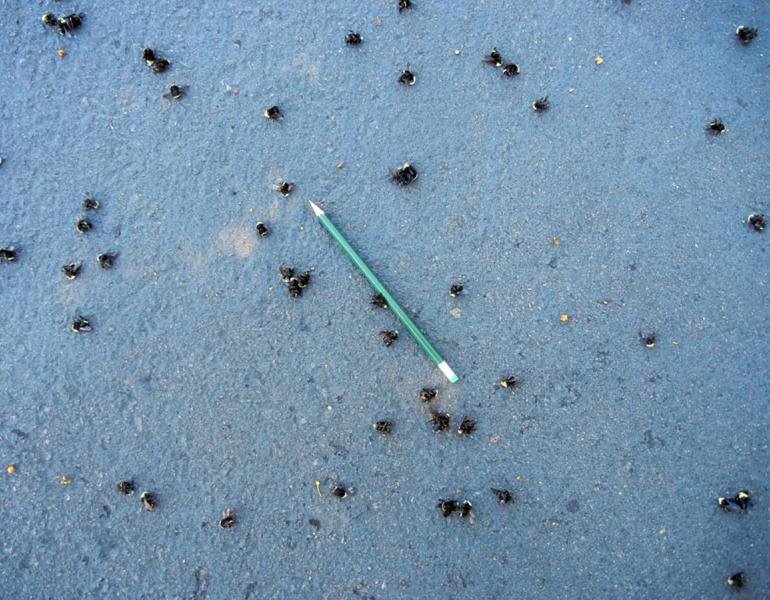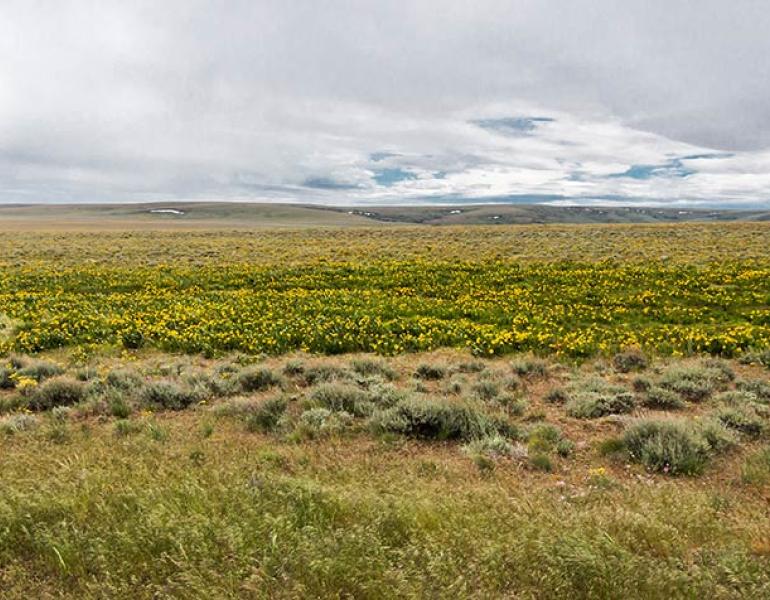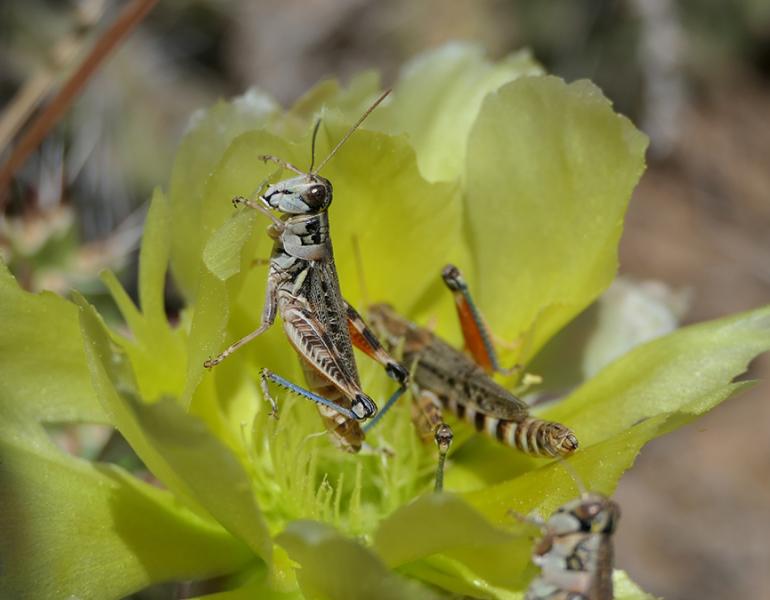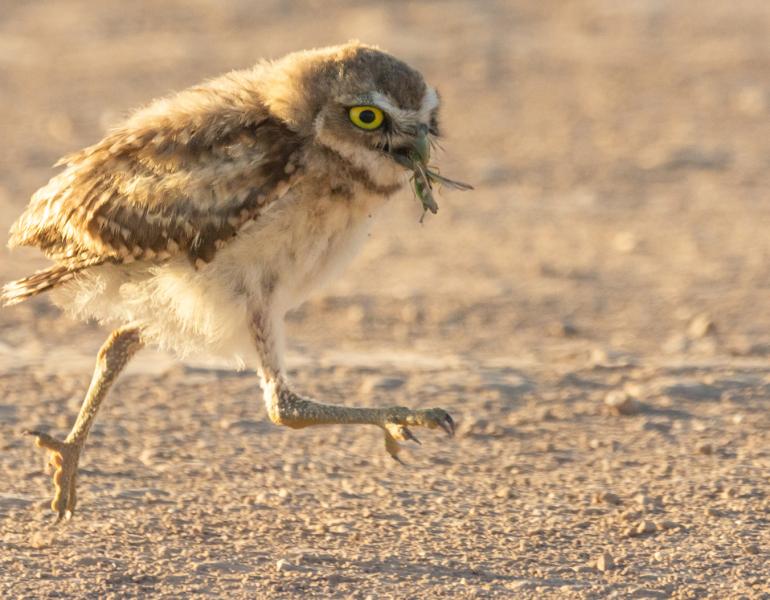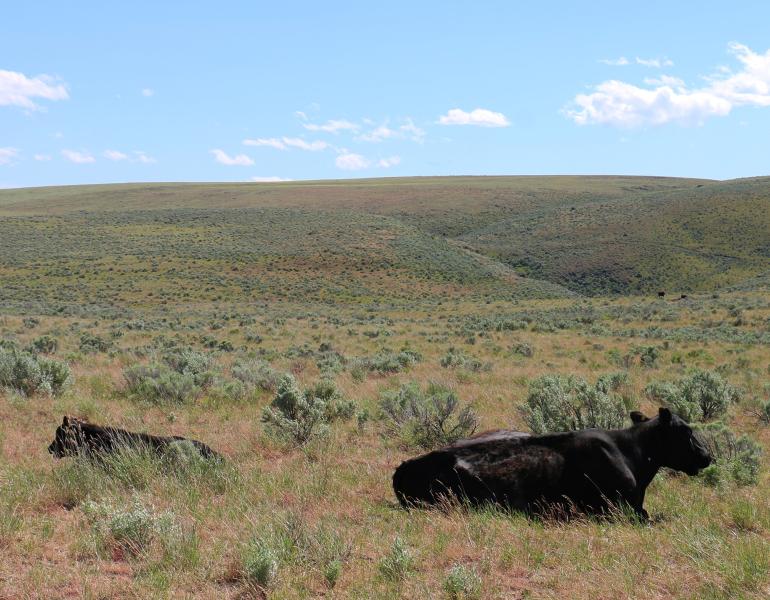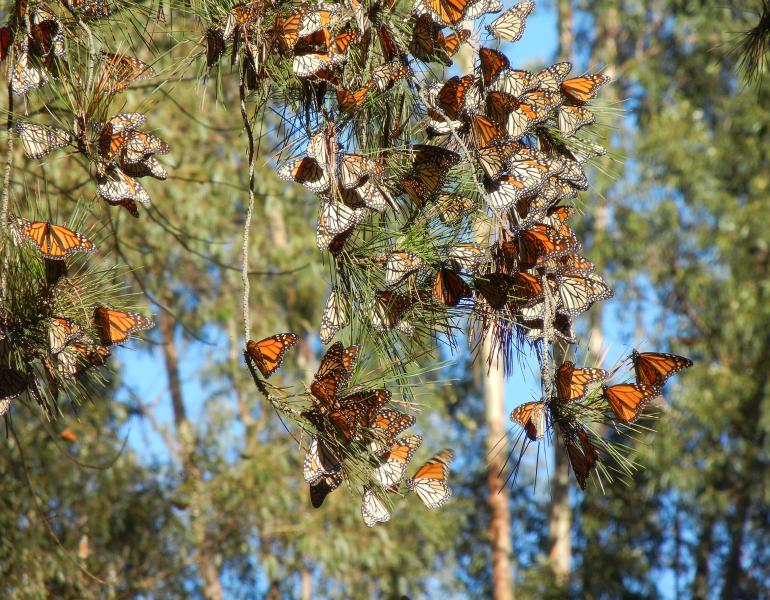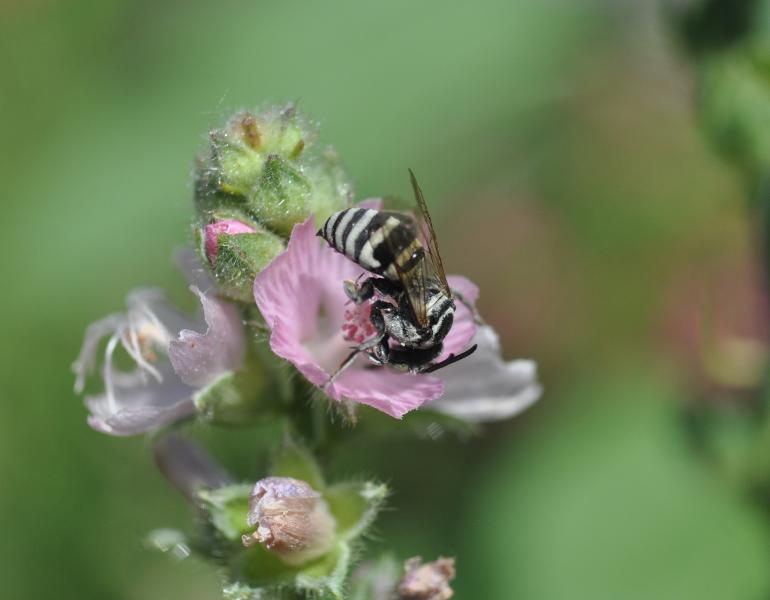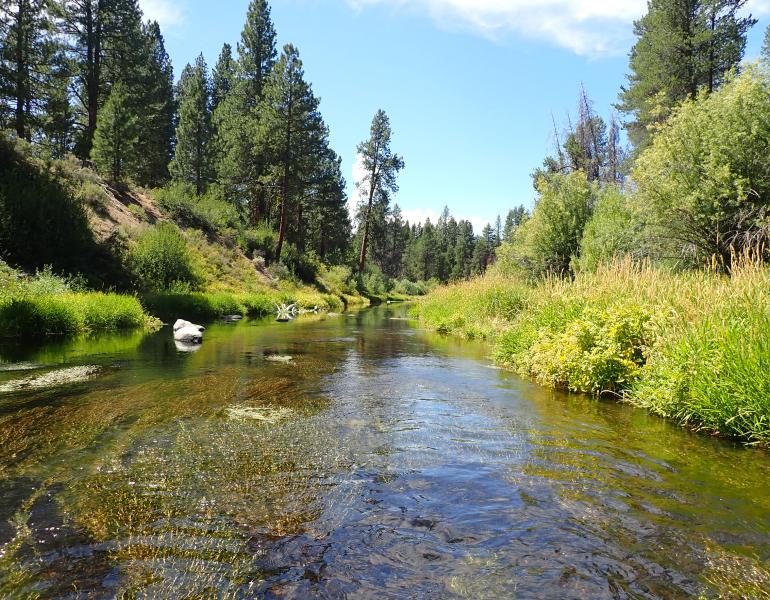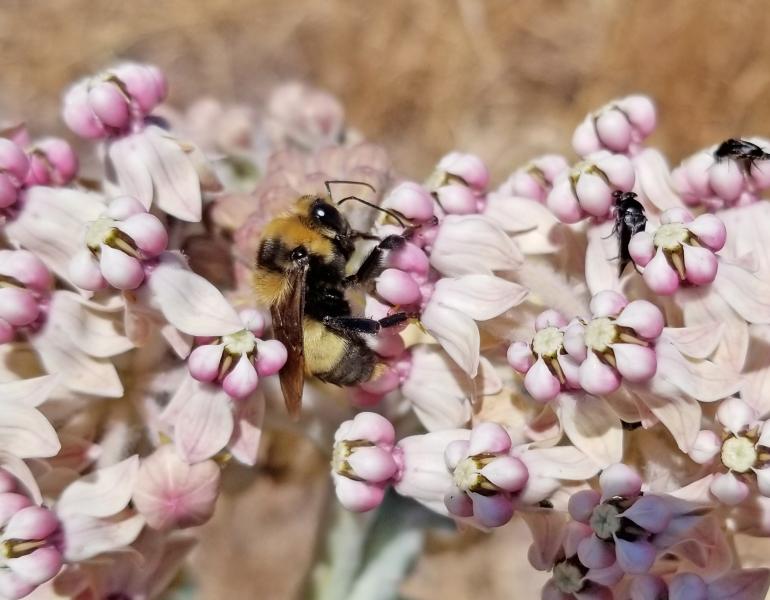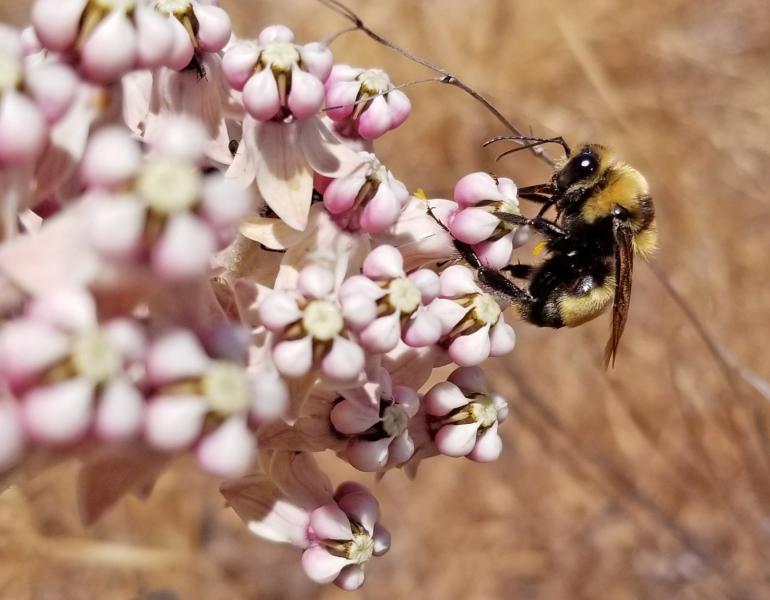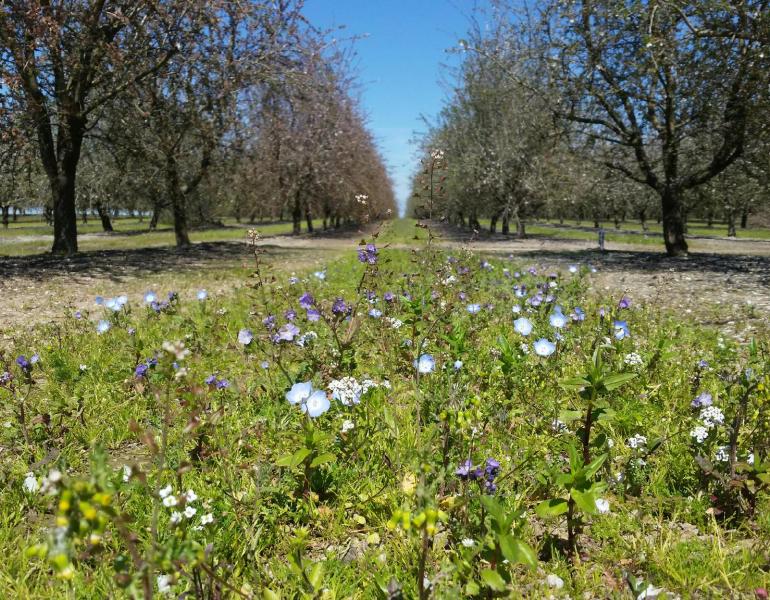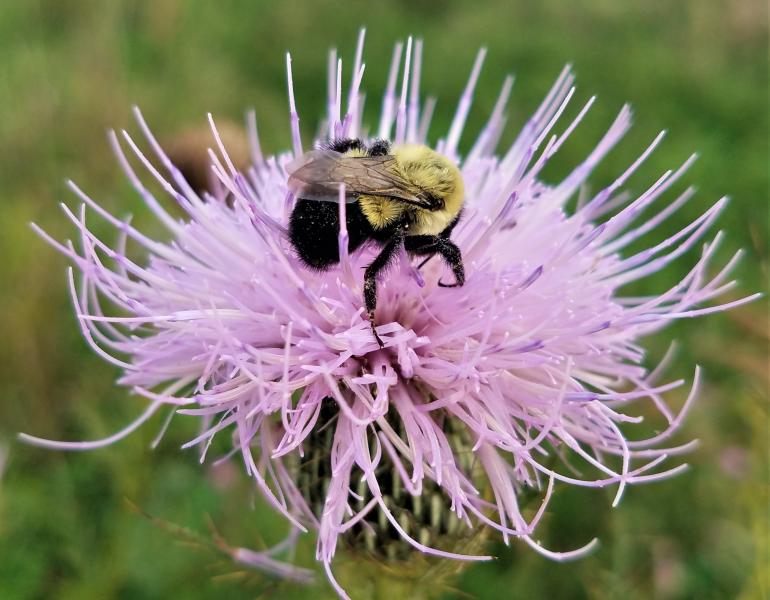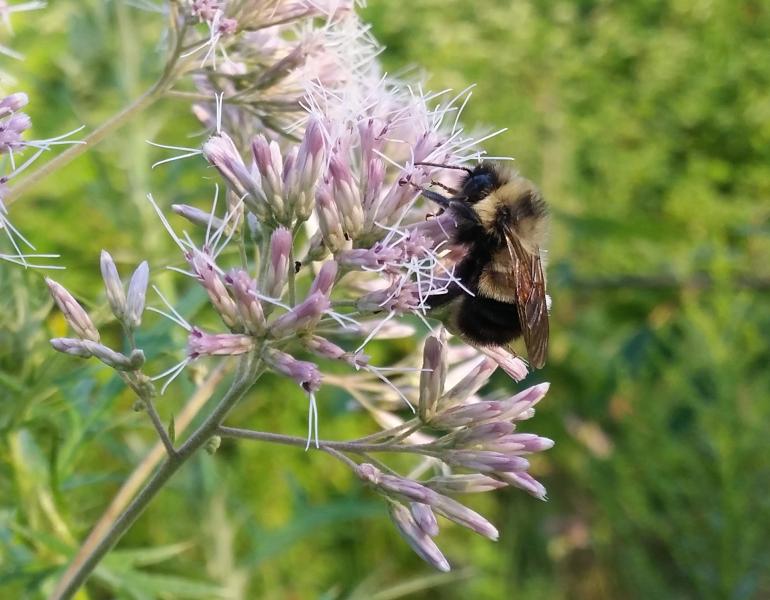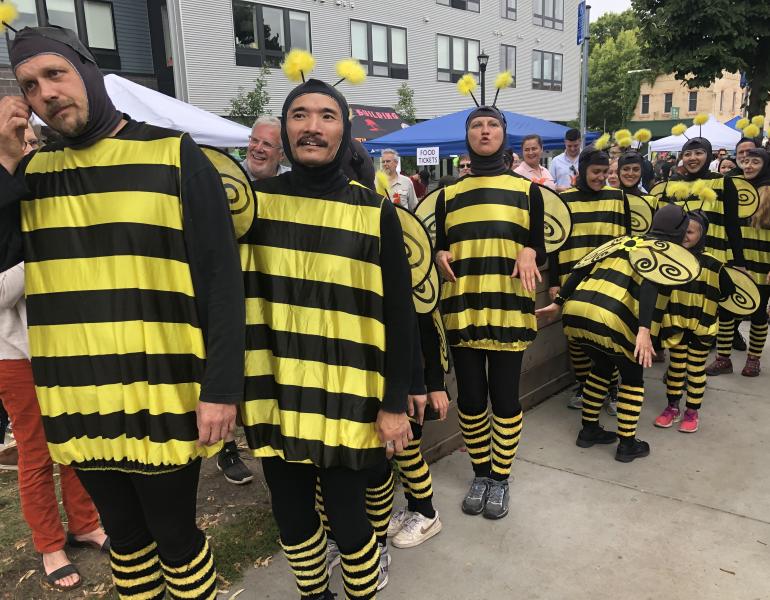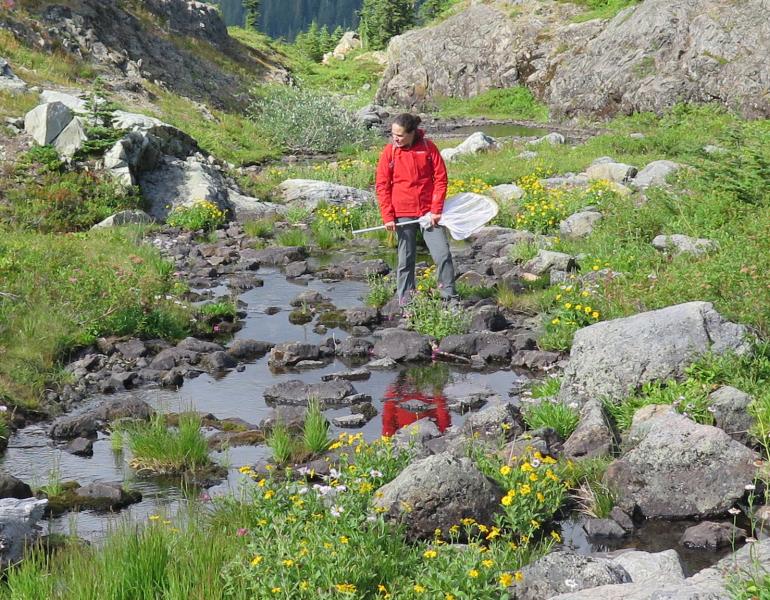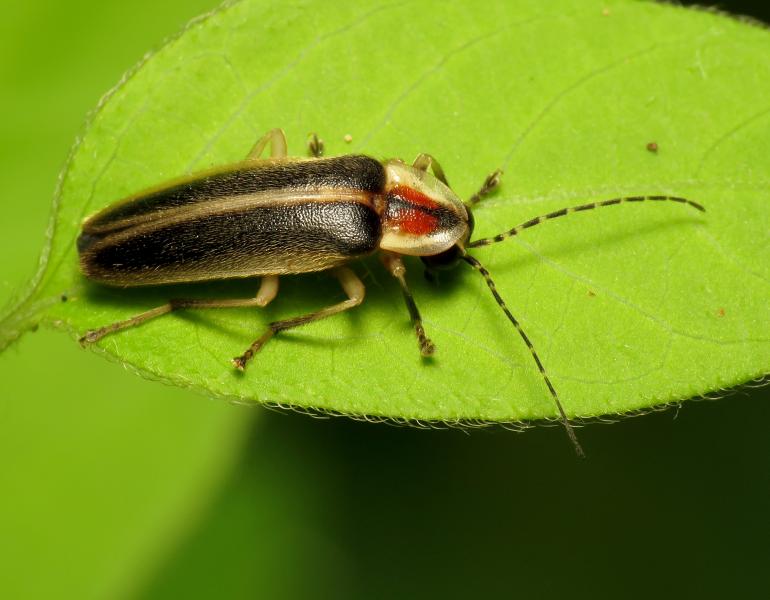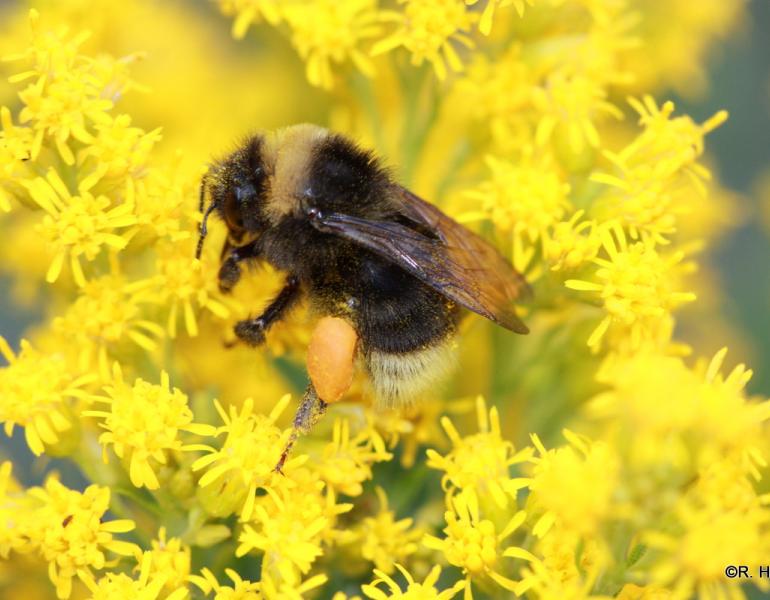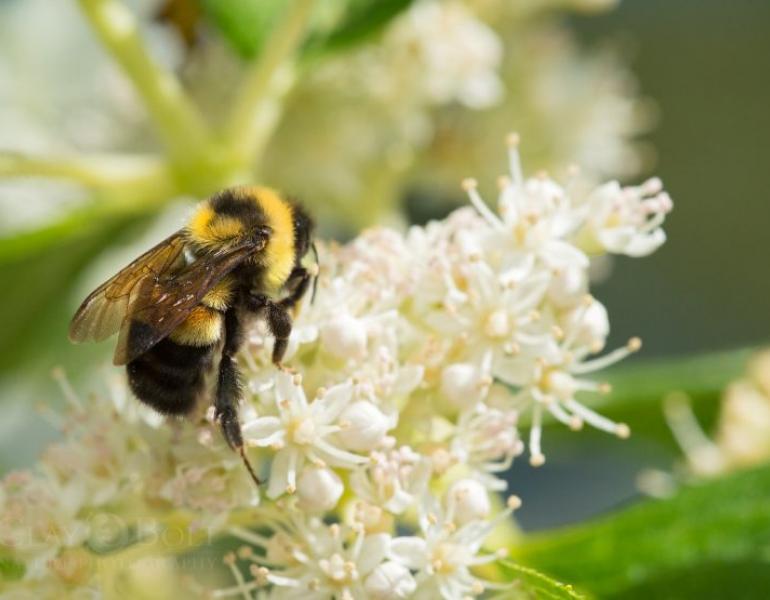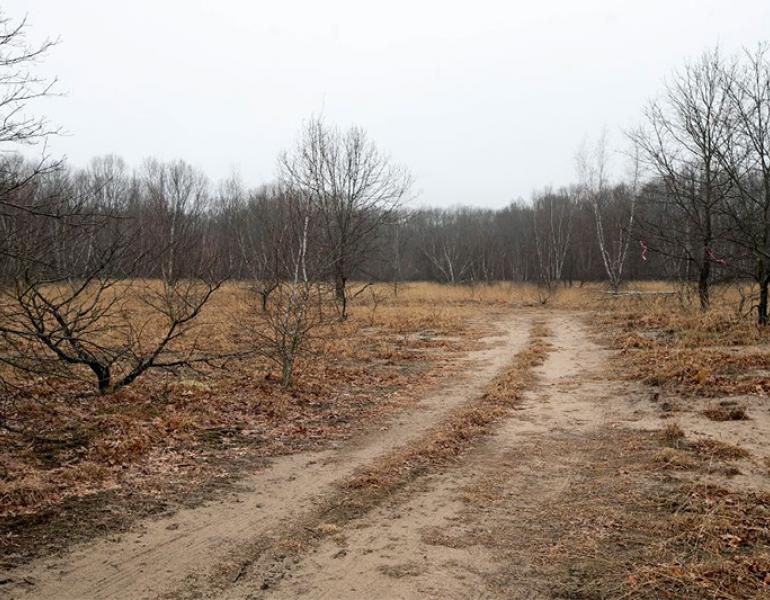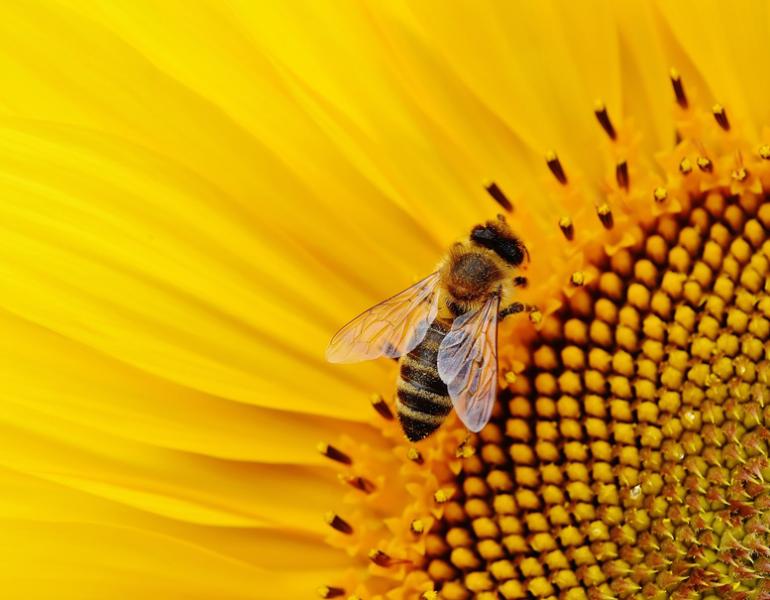Without our federal public lands, many invertebrates—and the plants and other animals that depend on them—would be in trouble. You can help speak up for these incredible places.
Advocacy and Activism
I See Dead Bees: What To Do Next and Why It Matters
Finding insects that have been harmed by pesticides is a sad experience. But there is a lot you can do to help prevent it from happening again!
No Mow May: An Easy Start for a Nature-Friendly Yard (But Not the Finish Line)
"No Mow May" is a quick and catchy name for a movement that aims far beyond not mowing the yard for a month. It's a gateway to understanding how we share our lawns with many small creatures.
Stronger Together: How To Build Your Conservation Community This Earth Week
Building your community can help us do more for conservation, and lightens the load and keeps us coming back to the causes we care about. Here's how!
Court Tells Federal Agency to Rethink Widespread Pesticide Spray Program
Xerces won a lawsuit that will help to reshape the federal grasshopper management program into one that better supports everyone: ranchers, farmers, and wildlife.
World Migratory Bird Day: Birds Need Bugs, And Both Need Our Help
Every action we take to save insects from pesticides, or to conserve nesting habitat for birds, helps the other. Together, bird watchers and bug fans can make a healthier world for everyone.
Air Pollution Hurts Pollinators Too, but We Can Help
While we can wear respirators and turn on air filters to manage the impacts of air pollution, pollinators have to rely on us to protect them.
How Advocates Stopped Aerial Insecticide Spray on 25,000 Acres of New Mexico Natural Areas
Within a week of Xerces sounding the alarm about upcoming widespread toxic insecticide spraying in natural areas, New Mexico residents and organizations were collaboratively advocating for the plan to be canceled.
Protecting Grassland Ecosystems from Insecticides
Grasshoppers play a central role in rangeland ecosystems and food webs. Herbivory by grasshoppers speeds up the recycling of nutrients from plants, and they are a vital part of the diet of dozens of other rangeland animals. Aerial spraying campaigns to control grasshoppers have wide impacts on rangeland ecology. Xerces staff are working to reduce spraying and protect rangeland wildlife.
Planned Grasshopper Sprays Threaten Monarchs, Bees, Beneficial Insects, and Birds Across Western Rangelands
Rangelands of the western United States are home to many amazing species of wildlife from sage-grouse to butterflies, and frequently used for cattle grazing. A significant proportion of rangelands are publicly owned, so how they are managed, especially when it comes to grasshopper control, is a topic of great concern.
Applying a Holistic Approach to Monarch Conservation
Xerces is a science-based conservation organization and our work on monarchs is no different. Whether it is restoring overwintering sites in California, creating breeding habitat in New York State, or protecting monarchs from pesticides, science informs our actions and maximizes our conservation return.
Ask for a Healthier World
Do you want a more bee-friendly community or a different way to control mosquitoes? Change can start with a simple ask. Asking, if done respectfully and with curiosity, can bring empowerment and strengthen community.
WARNING: this blog post may entice you to partake in “virtual democracy”
From the comfort of home, I engage in conservation efforts from Maine to California and from Tennessee to Washington. I can click “Join” knowing that no matter where that video link takes me, I’ll be met by dedicated people working to create a better world.
To Protect Pollinators, Talk to Your Nursery
Creating a welcoming home for local pollinators in your backyard or city park is reason enough to choose plants free from harmful pesticide residues. But how do you figure out if the plant you want is free of pesticides that can harm pollinators?
California Court Case: Protection of Insects under the California Endangered Species Act
The Xerces Society and our conservation partners at Defenders of Wildlife and Center for Food Safety, represented by the Stanford Environmental Law Clinic, appealed a recent court decision that determined that the California Fish and Game Commission lacks authority to list four bumble bee species under the California Endangered Species Act.
Ethanol Plant Causes Severe Pesticide Contamination in Nebraska
The majority of seed corn planted in the United States is coated with insecticides. Unsold seed corn is given to an ethanol plant for processing into biofuel—cheap disposal for the seed company and free raw material for the ethanol plant. But because this toxic material is not regulated as a pesticide, it has a significant impact on the environment and local communities.
Court Decision Undermines the State of California’s Ability to Protect Insects Under its Endangered Species Act
The Superior Court of Sacramento County recently sided with agricultural groups and determined that the State of California does not have the legal authority to protect insects under the California Endangered Species Act, effectively excluding a huge proportion of animal diversity from a law that was enacted to broadly protect the state’s wildlife.
Xerces Urges California to Step Up for Pollinators
California is poised to restrict the use of neonicotinoids—some of the most pollinator-toxic insecticides in use. Yet, a closer look at the narrow proposal, which focuses solely on managed pollinators, casts doubt on the value of the proposed regulations. In response, the Xerces Society is asking the state to take into account the significant risks these chemicals also pose to bumble bees, monarch butterflies, and other beneficial insects at risk of extinction.
Standing Up for Native Thistles
Native thistles are beautiful, important wildflowers and yet, are frequently treated as weeds. In late 2018, we had an opportunity to give native thistles a boost in Iowa by urging changes to state noxious weeds code. Six months later we heard that the weed laws had been rewritten.
U.S. Fish & Wildlife Service Fails to Designate Critical Habitat for the Rusty Patched Bumble Bee
The U.S. Fish & Wildlife Service decided to not designate critical habitat for the rusty patched bumble bee, despite its previous finding that habitat loss threatens the bee. Failing to designate critical habitat may hinder recovery of the rusty patched bumble bee, which has already been lost from more than three quarters of its historic range.
New Report: How Dicamba Herbicides are Harming Cultivated and Wild Landscapes
Since 2016, more than five million acres of crops—an area roughly the size of New Jersey—have been injured by dicamba drifting off site. Concerned landowners and volunteer monitoring efforts also have raised the alarm about extensive drift damage to wild plant communities across the Midwest and mid-South.
12 Climate Actions for Earth Week
Some good news (amidst all the bad lately) is that even with physical distancing and shelter-in-place requirements, there are still a lot of actions many of us can take to help in the fight against climate change. Focusing on one or any combination of these actions can help.
Evolution in Attitudes Leads to Greater Interest in Pollinator Conservation
Twenty years ago, being referred to as the “bee guy” wasn’t always positive. In contrast, today many people are keen to learn about what they can do to protect pollinators. We are proud to be part of the reason that the public has become more aware of, and engaged in, pollinator conservation.
Xerces' Holistic Approach to Conservation
We at the Xerces Society view our work as an interconnected whole rather than as separate parts. To achieve conservation success, we must understand both science and policy. We need to inspire people and at the same time empower them with the tools they require.
Taking a Stand for Firefly Species Facing Extinction
The Xerces Society and the Center for Biological Diversity have submitted a joint petition for the emergency listing of the Bethany Beach firefly (Photuris bethaniensis) under the federal Endangered Species Act (ESA).
Pollinators and the 2018 Farm Bill
Although we did not get everything we wanted in the 2018 Farm Bill, pollinators are still a priority and formal commitments to support conservation efforts are now in effect for at least the next five years.
Climate News Round-Up: January 2019
Climate change is an unprecedented global challenge. Angela Laws, our resident climate change expert, reviews recent news on the topic and provides concrete ways to help.
Pollinator Conservation Program Digest – December 2018
December’s featured staff hail from Iowa and Minnesota, and have been making significant impacts in their respective states by educating farmers and other members of the public, helping to restore and build new habitat, and pushing for policies that support pollinators and other beneficial insects.
The Xerces Society Seeks Endangered Species Protections for California Bumble Bees
Protecting these species is not only the right thing to do; it will also help to maintain the healthy ecosystems that make California such a remarkable and productive state.
Celebrating the Legacy of Rachel Carson
Reflecting upon the impactful work of a woman writer, scientist, and environmental advocate on the anniversary of the publication of Silent Spring.
The Endangered Species Act Needs Your Help!
The Endangered Species Act is our nation’s most effective law for protecting animals and plants in danger of extinction, and it has prevented 99% of listed species from going extinct. We need your voice to help defend this crucial law.
Lincoln Brower: A Life Well Spent
Remembering a ground-breaking monarch researcher, a passionate advocate for monarchs, and a beloved member of the conservation community.
Connecticut’s Sand Plains Need Protection
Sand plains have been subjected to mining, development, and fragmentation, resulting in a loss of up to 95% of this habitat type. But these unusual environments are home to a number of rare plants and insects.
10 Ways to Celebrate Earth Day
Here are some ways you can work to promote a healthy planet for invertebrates and the people they let share their planet.
Scientists Urge Action to Protect Waters from Neonicotinoid Insecticides
Will California’s regulators take steps to curtail neonicotinoid water pollution? If they take the advice of scientists, they will.
Don’t Downsize the Cascade-Siskiyou National Monument
The Cascade-Siskiyou National Monument is unique among the BLM’s National Conservation Lands in that it is one of the most biologically diverse places in North America.
Science: Something Worth Marching For
Science underpins all that we do. That's why we're proud to be partners in the 2017 March for Science.
Rusty Patched Bumble Bee: The First Bee in the Continental U.S. to be Protected Under the Endangered Species Act
This news comes after more than a decade of work by the Xerces Society and our partners: Scientists, farmers and land managers, filmmakers, advocates, and community members who all care about native bees and their plight.
In a rapidly warming climate, imperiled species may have nowhere to run.
Making their home in the aquatic alpine ecosystem in the highest elevations of Glacier National Park, Montana, the western glacier stonefly depends upon rapidly disappearing glaciers for its survival. Will it be the first species to go extinct as a direct result of climate change?
Monarch Butterflies in the Western United States
Much of the focus on monarch butterflies is on the eastern population. Monarchs in western North America are in greater decline and need conservation help.
Shortfalls of EPA’s Preliminary Risk Assessment for Imidacloprid
While we are pleased that the EPA released this initial assessment, our review of the documents shows severe shortfalls in the methods and omissions in the evaluation.



